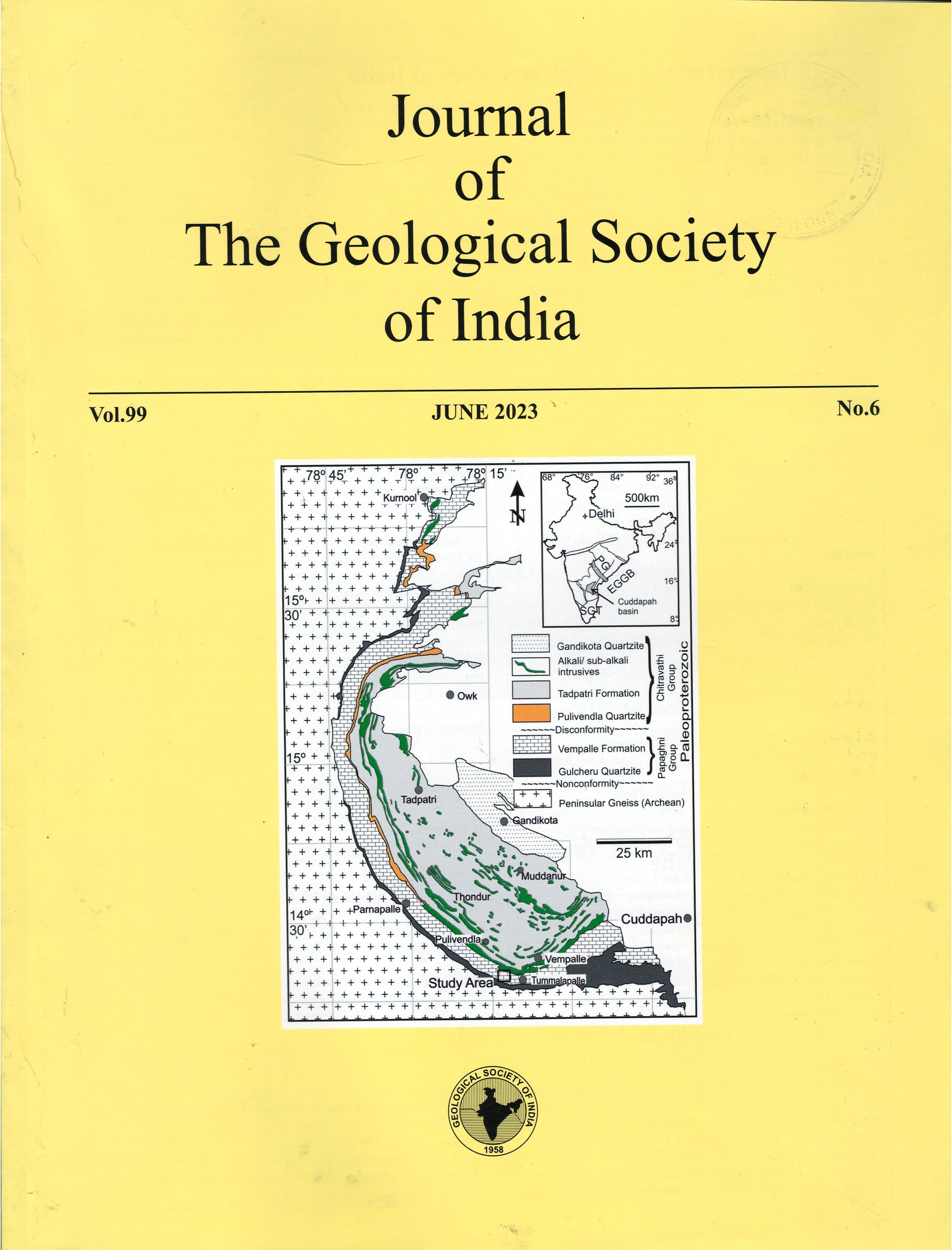Spatiotemporal Analysis and Trend Detection of Groundwater Levels Using Gis Techniques in Nadia District of West Bengal, India
DOI:
https://doi.org/10.1007/s12594-023-2394-xKeywords:
No Keywords.Abstract
Groundwater (GW) resources are influenced by several factors like over exploitation, geological formation, climate etc. A long-term GW level trend detection is necessary for sustainable groundwater usage planning in future. In the present study, long-term (1990-2013) spatio-temporal analysis of GW levels during pre-monsoon and post-monsoon was done to elucidate the GW level variation trends in Nadia. Results show that the groundwater levels dropped more than 2.5 m below ground level (bgl) in the central part of the district, however, this drop was less than 2.5 m (bgl) in the northern and southern part of the district. According to pre- and post-monsoon data, the average annual water level decreased beyond 3 m (bgl) in blocks of Tehatta II, Chapra and Chakdah. Average GW level at Krishnaganj and Chakdah, in pre-monsoon were 6.84 m (bgl) and 7.55 m (bgl) respectively, which was higher than the post-monsoon (4.20 m (bgl) and 4.43 m (bgl)). During post-monsoon except Karimpur-I, Krisnaganj (both negative trend) and Hashkali (no trend) and in pre-monsoon except Krisnaganj (negative trend) and Hashkali (no trend), all the other blocks had positive trend. The study reveals that the groundwater levels in the southeastern and northeastern regions of the district drops by more than 5 m bgl in pre-monsoon and more than 4 m bgl in post-monsoon. Such fluctuations of groundwater levels may have serious bearing on agricultural operations in this intensively cultivated and irrigated area.

 Aniket Baishya
Aniket Baishya






